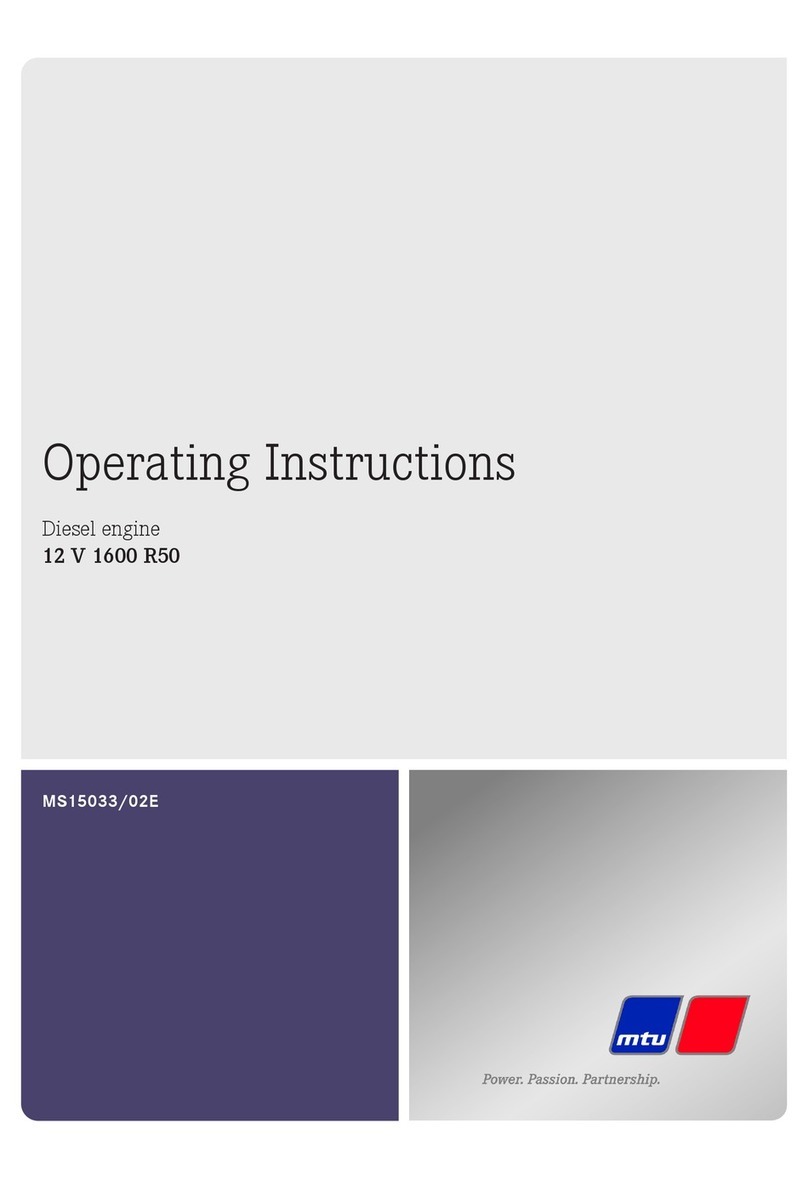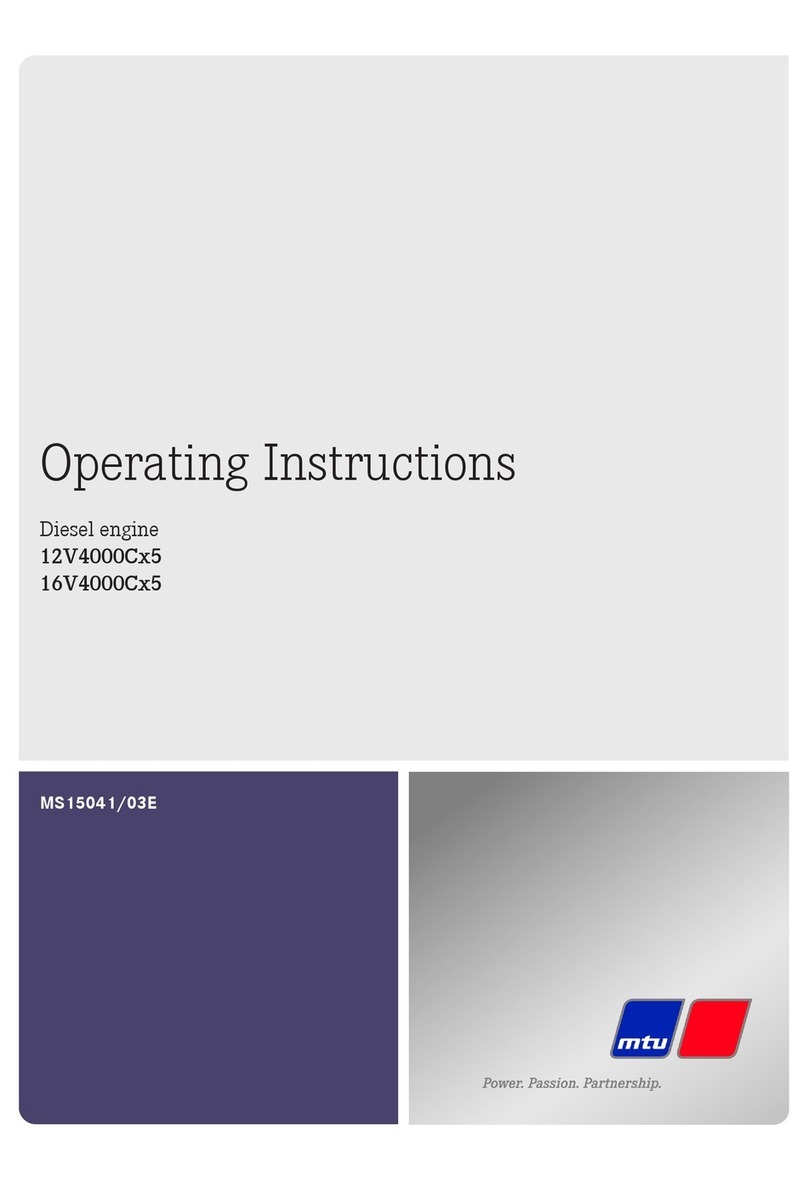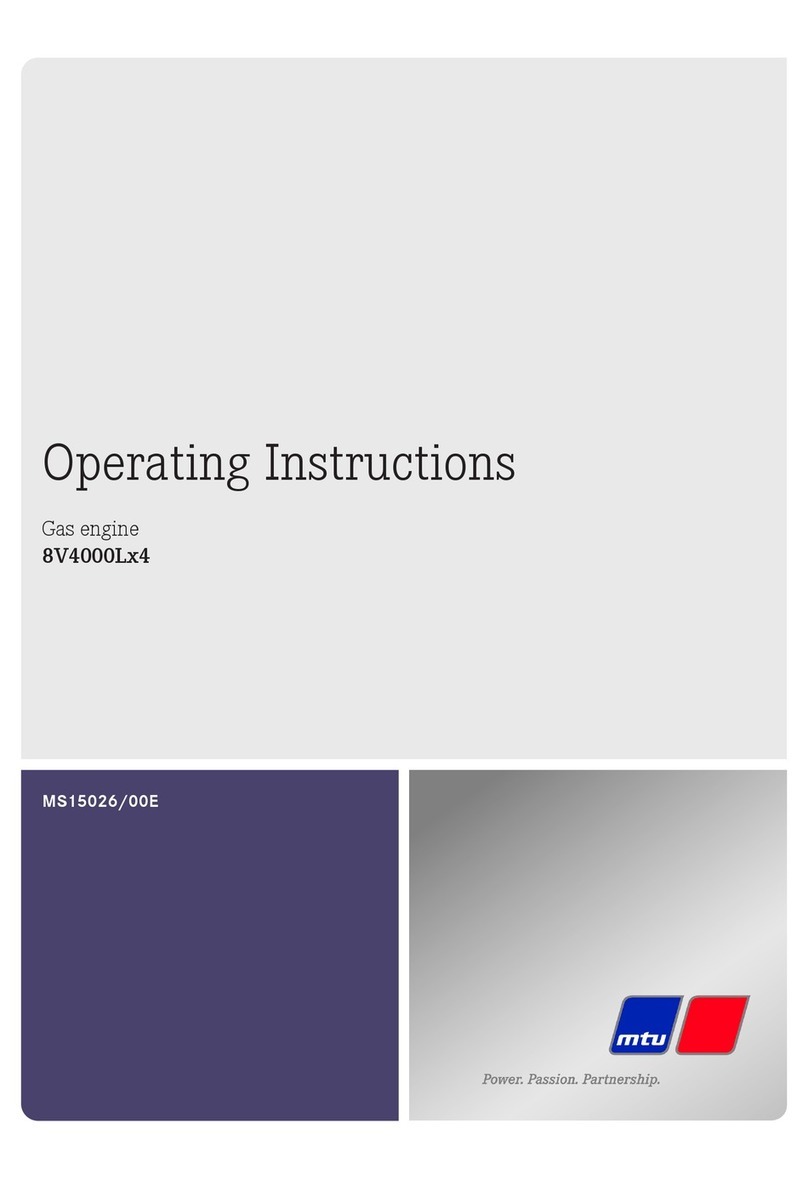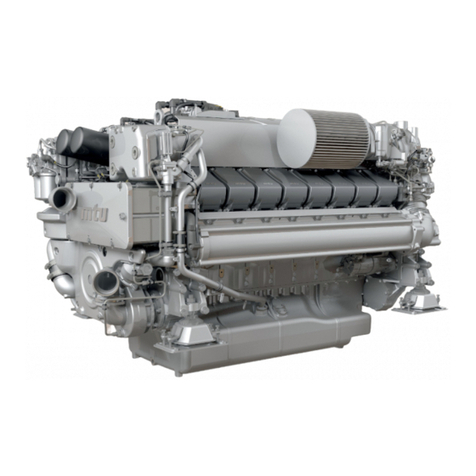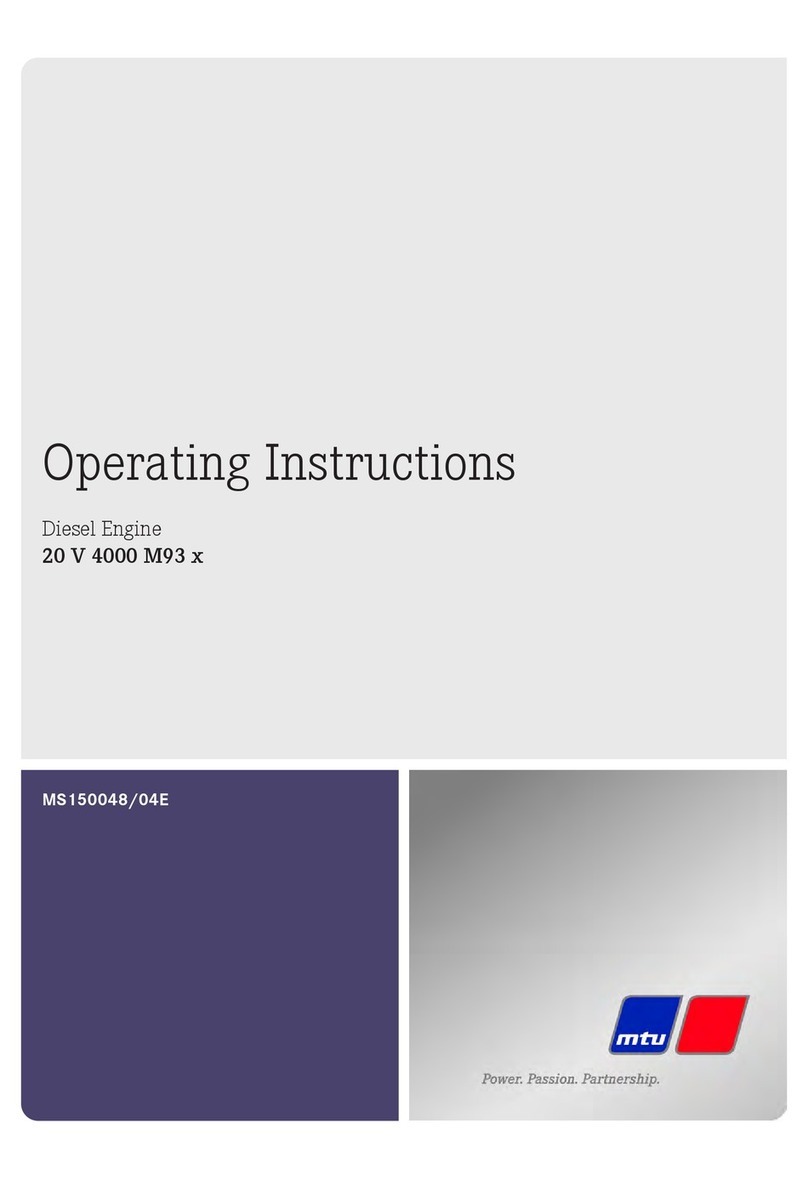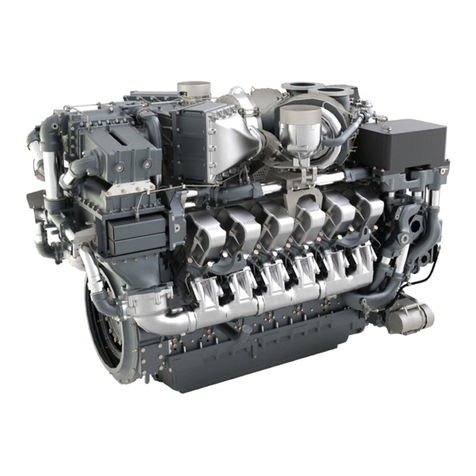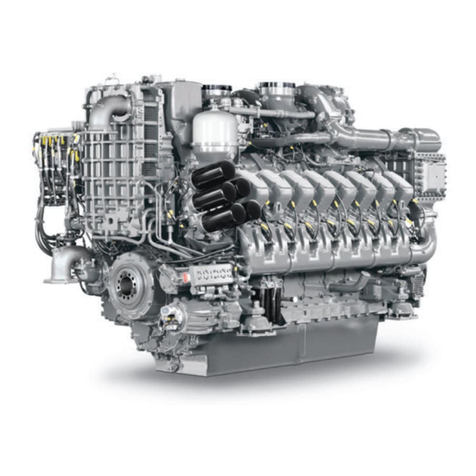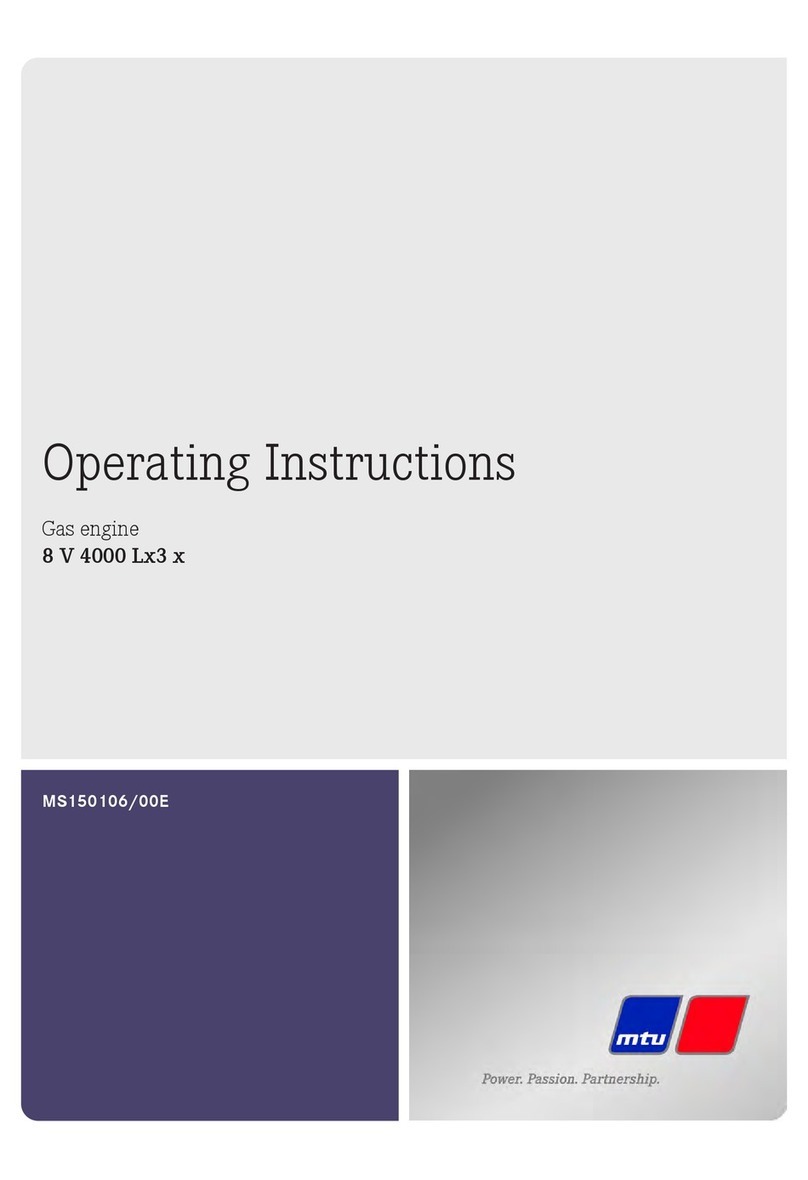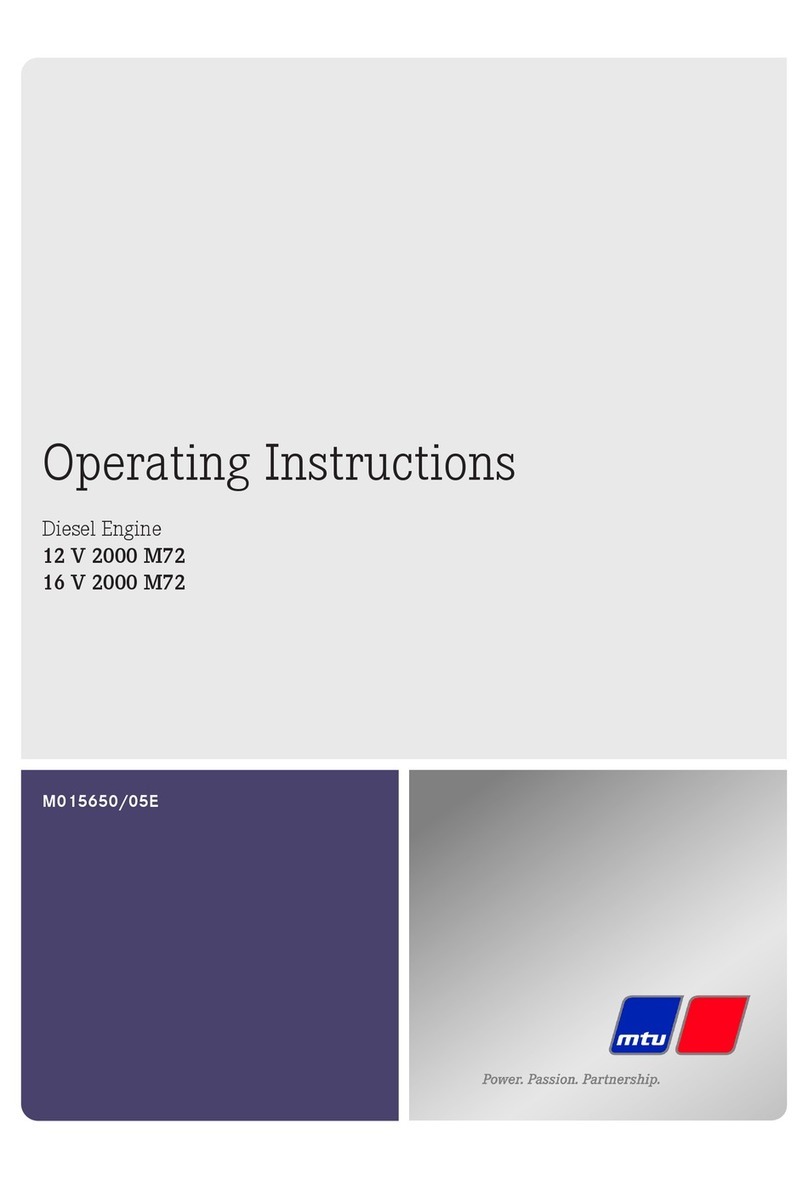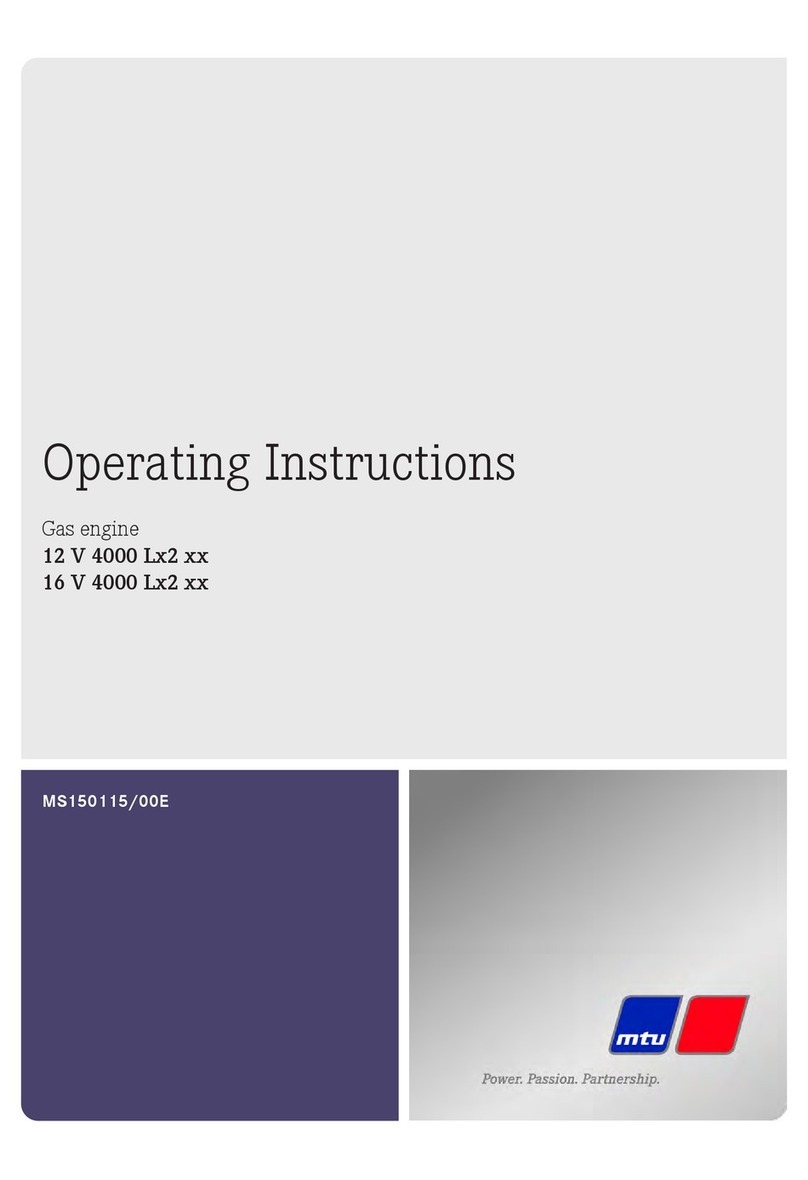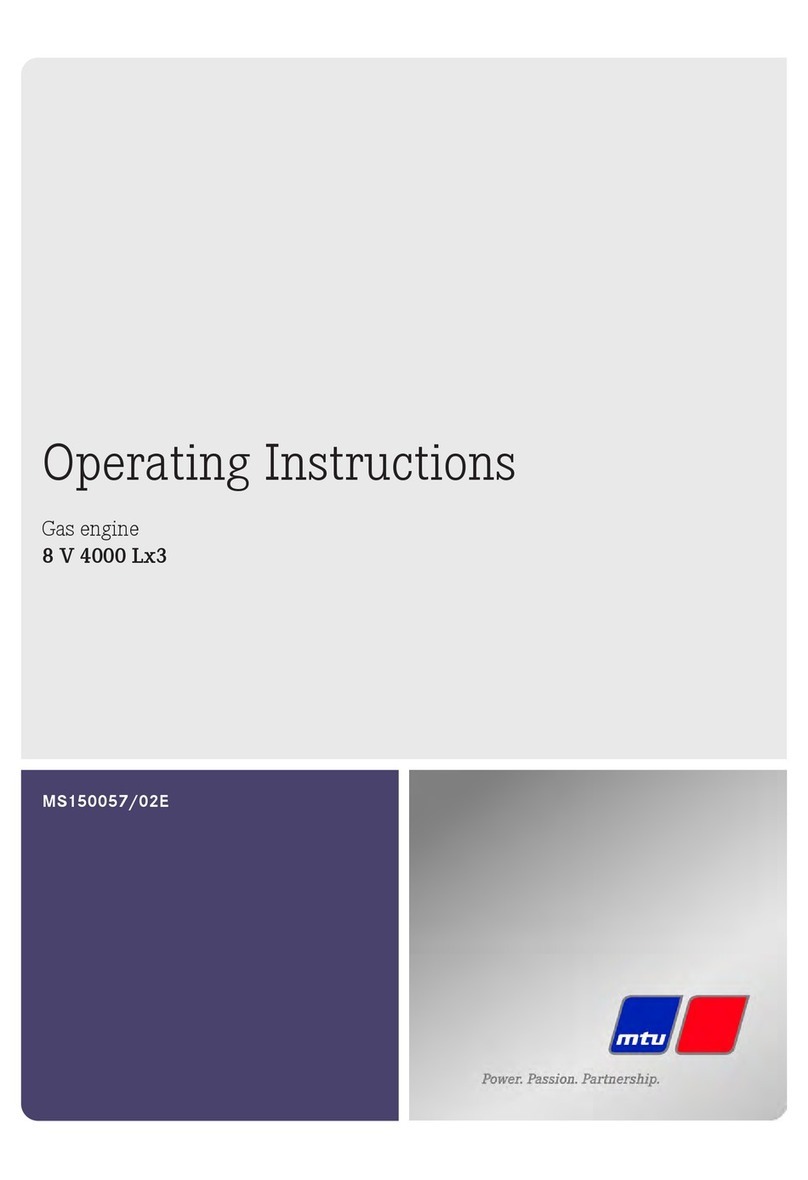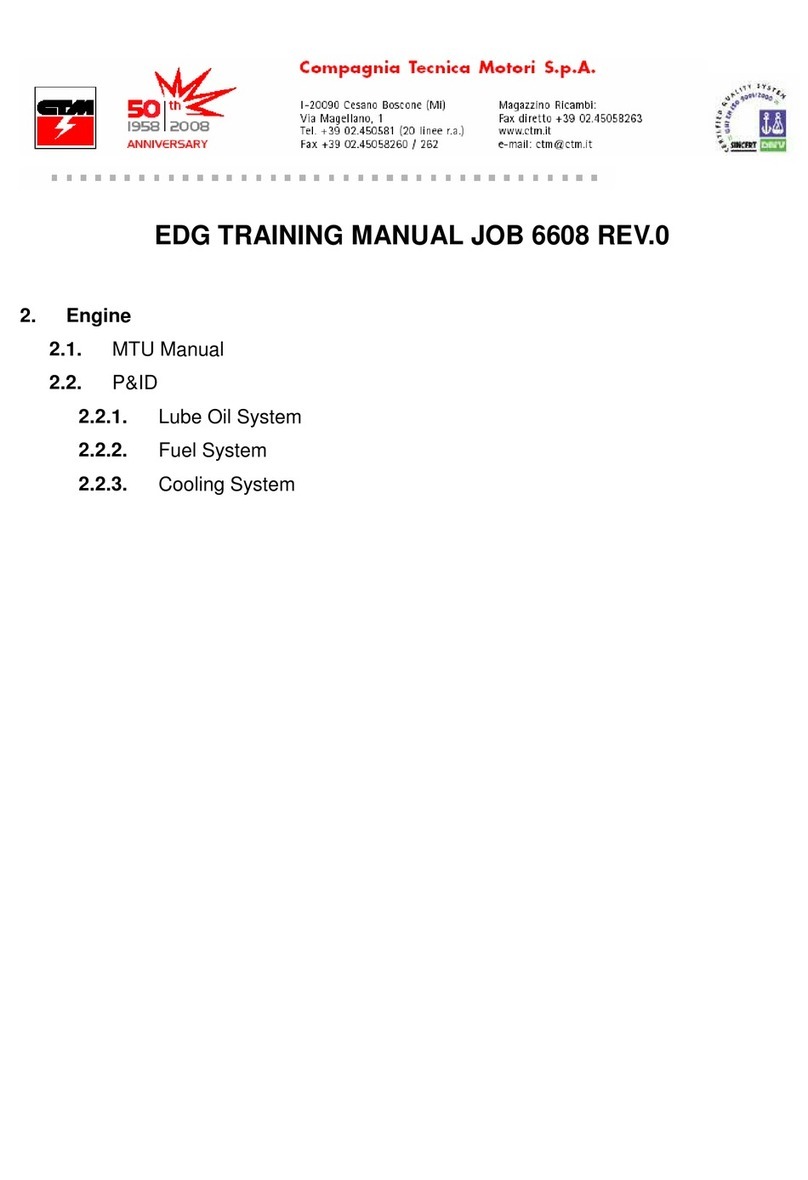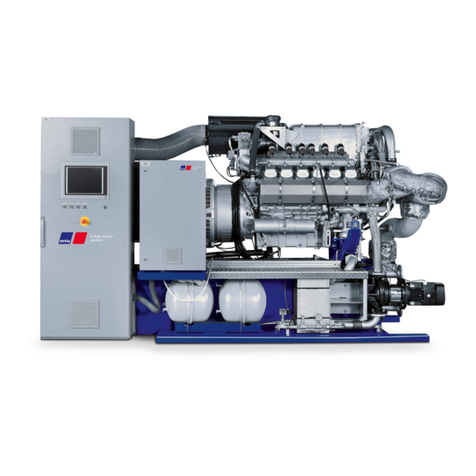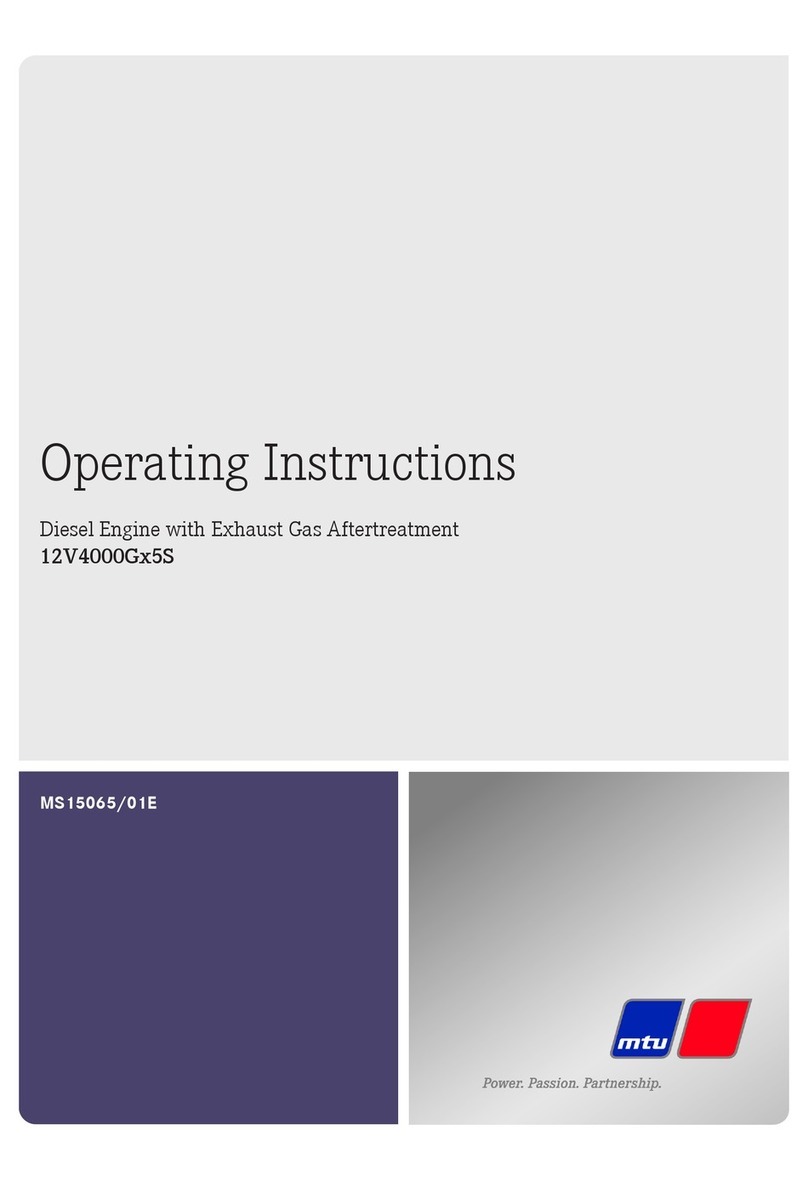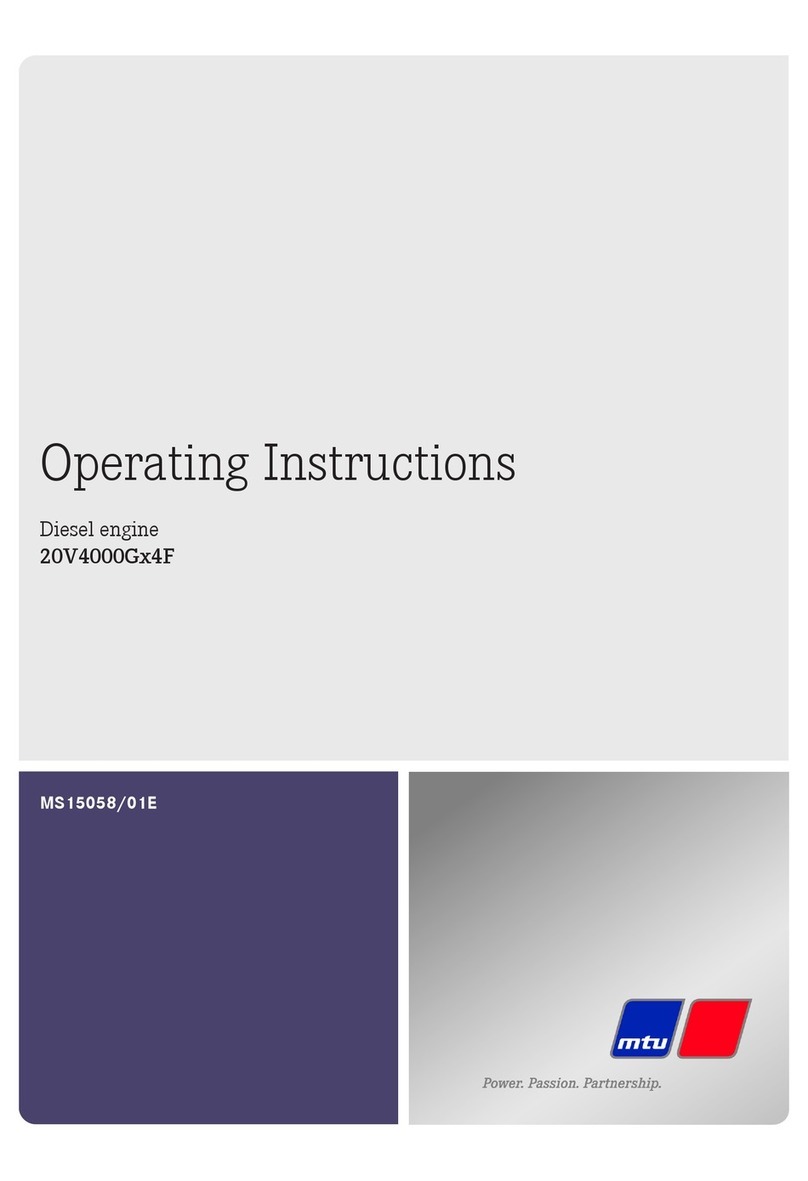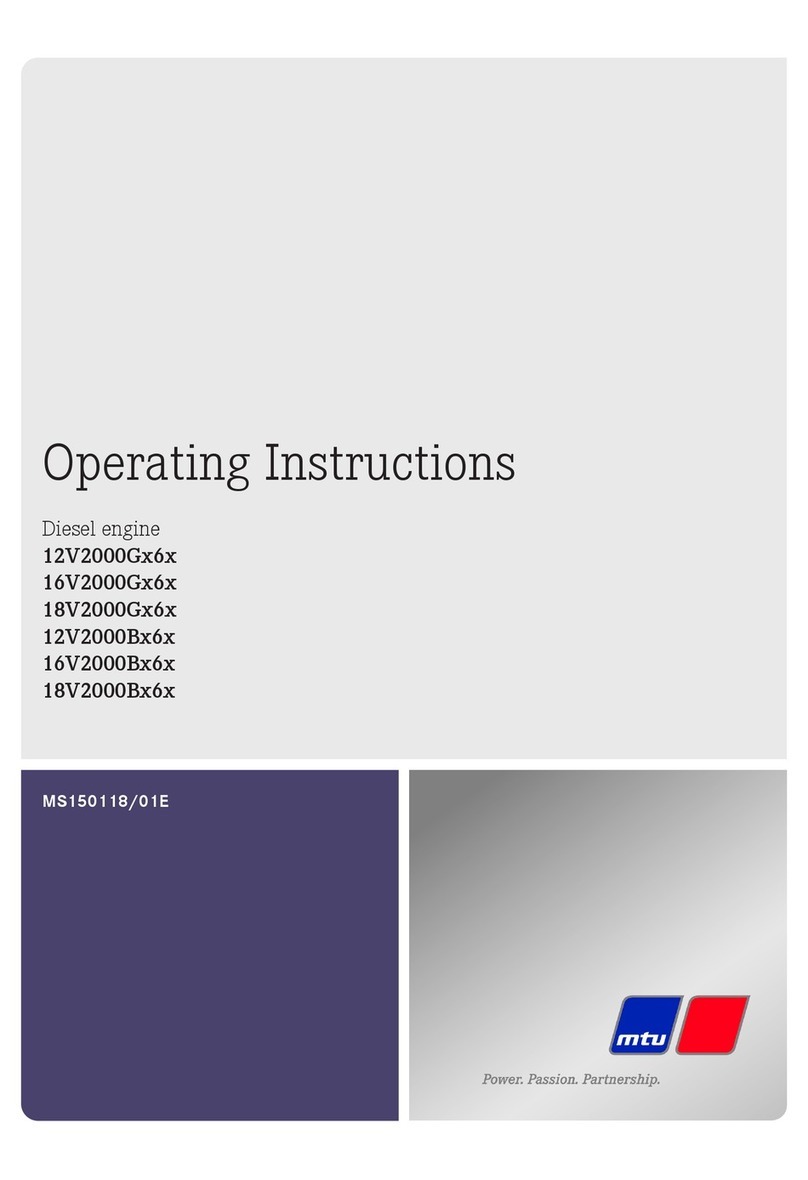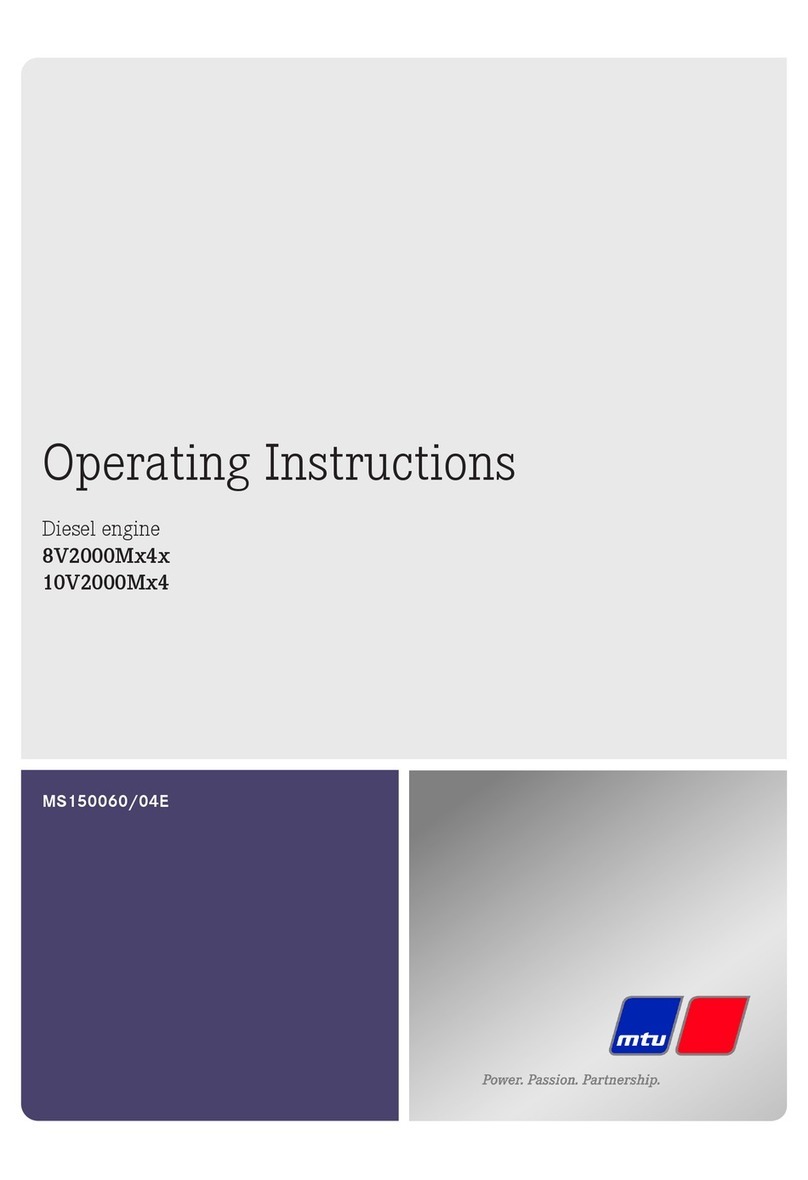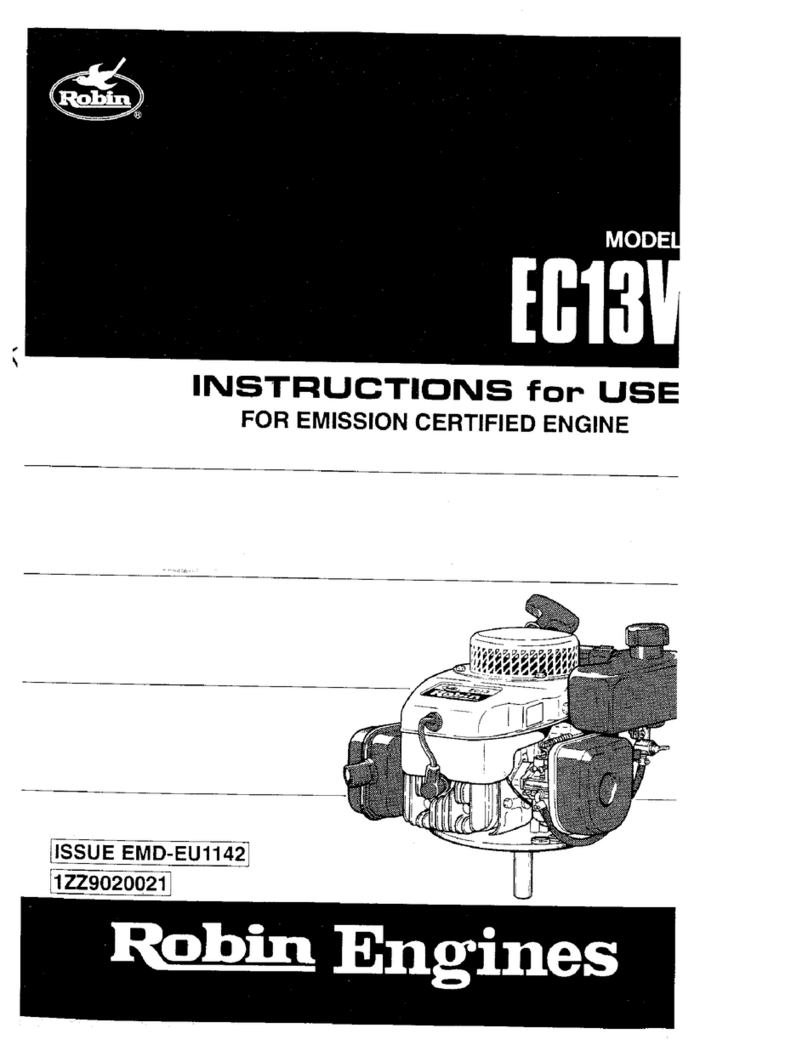
Table of Contents
1 Safety
1.1 Important provisions for all products 5
1.2 C&I and O&G, application 1600 – Intended
use 7
1.3 Personnel and organizational requirements 8
1.4 Safety regulations for initial start-up and
operation 9
1.5 Safety regulations for assembly,
maintenance, and repair work 11
1.6 Fire and environmental protection, fluids
and lubricants 15
1.7 Standards for warning notices in the text
and highlighted information 17
2 Transport
2.1 Transportation 18
2.2 Lifting requirements 21
3 General Information
3.1 Engine side and cylinder designations 22
3.2 Engine – Overview 23
3.3 Sensors and actuators – Overview 25
4 Technical Data
4.1 Engine data 10V1600C60 / 10V1600C70,
US EPA Nonroad Tier 4 (40 CFR 1039),
emissions-optimized 30
4.2 Engine data 10V1600C60 / 10V1600C70,
US EPA Nonroad Tier 4 (40 CFR 1039)
compliant, emissions-optimized 34
4.3 Engine data 12V1600C50 / 12V1600C60 /
12V1600C70, US EPA Nonroad Tier 4 (40
CFR 1039), emissions-optimized 38
4.4 Engine data 12V1600C50 / 12V1600C60 /
12V1600C70, US EPA Nonroad Tier 4 (40
CFR 1039) compliant, emissions-optimized 42
4.5 Firing order 46
4.6 Engine – Main dimensions 47
5 Operation
5.1 Putting the engine into operation after
scheduled out-of-service-period 49
5.2 Putting the engine into operation after
extended out-of-service periods (>3 months) 50
5.3 Engine – Starting 51
5.4 Operational checks 52
5.5 Emission label – Check 53
5.6 Engine shutdown 54
5.7 After stopping the engine 55
5.8 Plant – Cleaning 56
6 Maintenance
6.1 Maintenance task reference table [QL1] 57
7 Troubleshooting
7.1 Troubleshooting 58
7.2 Engine Control Unit ECU9 – Fault messages 61
8 Task Description
8.1 Engine 102
8.1.1 Engine – Barring manually 102
8.1.2 Engine – Test run 103
8.2 Valve Drive 104
8.2.1 Valve clearance – Check and adjustment 104
8.2.2 Cylinder head cover – Removal and
installation 107
8.3 Fuel System 110
8.3.1 Fuel system – Venting 110
8.4 Fuel Filter 113
8.4.1 Fuel filter – Replacement 113
8.4.2 Fuel prefilter – Draining 115
8.4.3 Fuel prefilter – Filter element replacement 116
8.5 Air Filter 117
8.5.1 Air filter – Replacement 117
8.6 Air Intake 118
8.6.1 Service indicator – Check 118
8.7 Exhaust Gas Recirculation 119
8.7.1 Exhaust flaps – Overview 119
8.7.2 EGR shutoff flaps – Coupling rod function and
play check 120
8.7.3 EGR shutoff flaps – Coupling rod replacement 121
8.7.4 Bypass flap – Coupling rod function and play
check 124
8.7.5 Bypass flaps – Coupling rod replacement 126
8.7.6 EGR cooler – Check 129
8.7.7 EGR cooler – Replacement 130
8.8 Lube Oil System, Lube Oil Circuit 132
8.8.1 Engine oil level – Check 132
8.8.2 Engine oil – Change 135
8.9 Oil Filtration / Cooling 137
8.9.1 Engine oil filter – Replacement 137
MS150100/06E 2017-08 | Table of Contents | 3
DCL-ID: 0000010268 - 008
